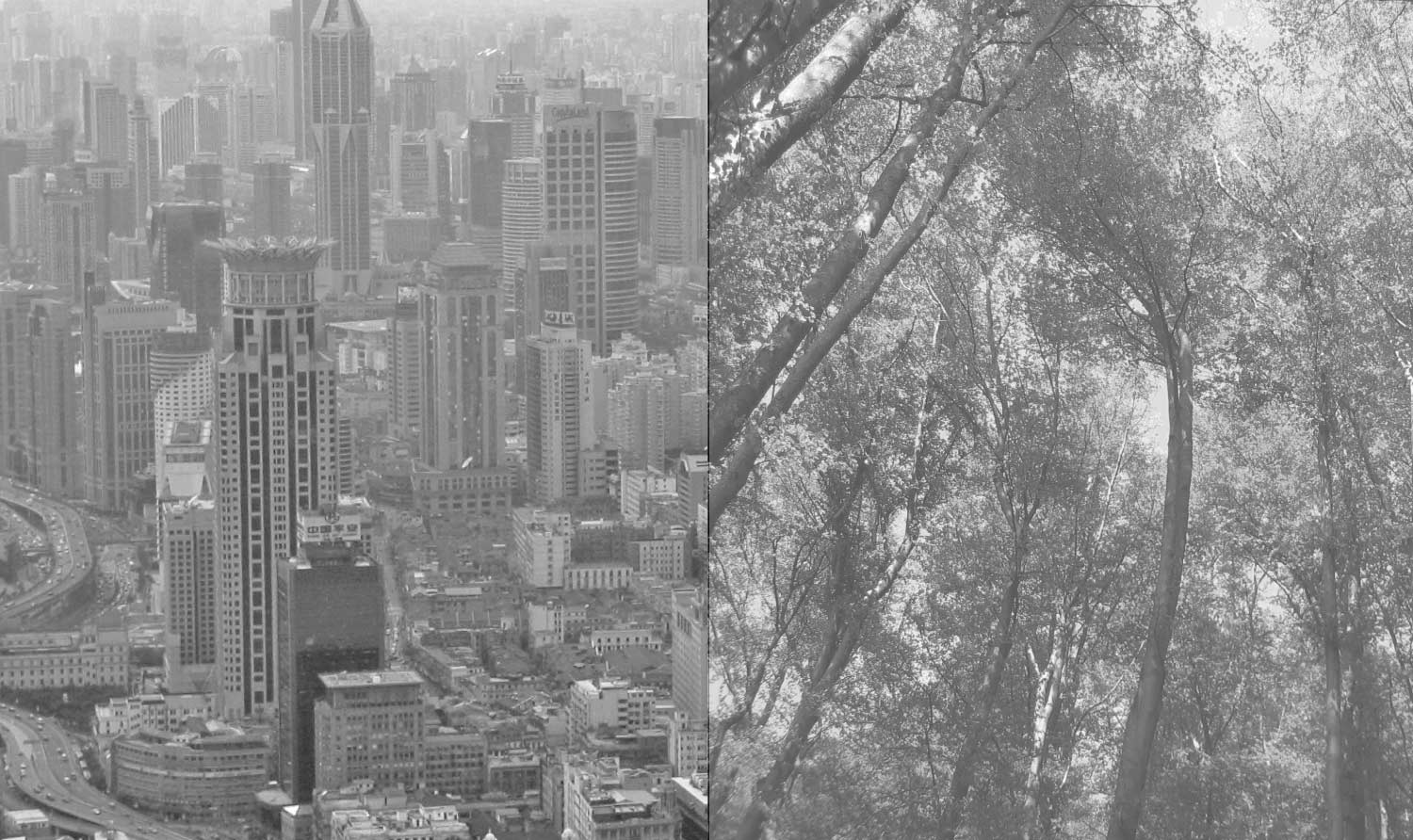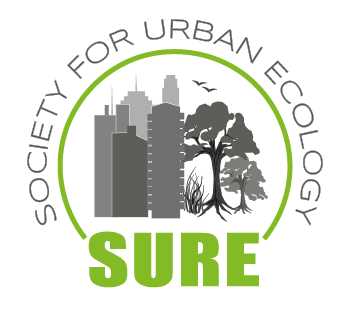SURE offers the SURE members the chance to share their current publications dealing with topics of SURE among the network. This should help to exchange knowledge and recent findings in the field of urban ecology between each other and to make the research of the SURE members more visible. If you are interested in the SURE Publication Service we would like to ask you to fill in the form and send it back to our SURE webmaster who will put the information on the SURE webpage.
- Home
- Publications
- Research publication service
Recent publications
2024
Tüfekcioğlu, İ., Çakmak, M. H., & Coşkun Hepcan, Ç. (2024): The use of EUNIS habitat classification to assess ecosystem services capacity: the case of Mamak district (Ankara, Türkiye). In: Ege Üniversitesi Ziraat Fakültesi Dergisi, 61(1), 31-45.
2021
Lee, S. W., Seow, C. W. & Xue, K. (2021): Residents’ Sustainable City Evaluation, Satisfaction and Loyalty: Integrating Importance-Performance Analysis and Structural Equation Modelling. In: Sustainability, 13(12), 6766.
2020
Çakmak, M. H., Aytaç, Z. (2020): Determination and mapping of EUNIS habitat types of Mamak District (Ankara), Turkey. In: Acta Biologica Turcica, 33(4), 227-236.
Çakmak, M. H., Can, M. (2020): Mamak İlçesinin (Ankara) Hava Kalitesinin İyileştirilmesine Yönelik Düzenleyici Ekosistem Hizmetlerinin Hesaplanması. In: Bilge International Journal of Science and Technology Research, 4(2), 141-149.
Lee, S. W. & Xue, K. (2020): A model of destination loyalty: integrating destination image and sustainable tourism. In: Asia Pacific Journal of Tourism Research, 25(4), pp. 393–408.
2018
Çakmak, M. H., Aytaç, Z. (2018): Urban vascular flora and ecological characteristics of Mamak District (Ankara/Turkey). In: Biological Diversity and Conservation, 11(2), 123-131.
Bae, S. M., Masud, M.A.K., Kim, J.D. (2018): A Cross-Country Investigation of Corporate Goverance and Corporate Sustainability Disclosure: A Signaling Theory Perspective. In: Sustainability, 2018 10 (8), p. 2611.
Han, L., Zhou, W., Pickett, S., Li, W. and Qian Y. (2018): Multicontaminant air pollution in Chinese cities. In: Bulletin of the World Health Organization, 96: 233-242E.
Masud, M.A.K., Nurunnabi, M., & Bae, S.M. (2018): The effects of corporate governance on environmental sustainability reporting: empirical evidence from South Asian countries. . In: Asian Journal of Sustainability and Social Responsibility 2018, 3(3), p. 1-26.
Masud, M.A.K., Hossain, M.S., & Kim, J.D. (2018): Is Green Regulation Effective or a Failure: Comparative Analysis between Bangladesh Bank (BB) Green Guidelines and Global Reporting Initiative Guidelines. . In: Sustainability, 10 (4), p. 1267.
2017
Aina, Y. A. (2017): Achieving Smart Sustainable Cities through GeoICT: The Saudi Evolving Smart Cities. In: Cities, 71, pp. 49-58.
Aina, Y. A., Parvez, I. M. and Balogun, A. L. (2017): Examining the effect of land use on the spatiotemporal dynamics of urban temperature in an industrial city: a Landsat imagery analysis. In: Global Changes and Natural Disaster Management: Geo-information Technologies, eds. J. Li and S. Pirasteh, Springer International: Cham, Switzerland, pp. 3-15.
Al-Shuwaikhat, H. M., Abubakar, I. R., Aina, Y. A., Adenle, Y. A., Umair, M. (2017): The Development of a GIS-Based Model for Campus Environmental Sustainability Assessment. Sustainability, 9 (3), 439: 1-23.
Artmann, M.; Kohler, M.; Meinel, G.; Gan, J.; Ioja, I.-C. (2017): How smart growth and green infrastructure can mutually support each other — A conceptual framework for compact and green cities. In: Ecological Indicators (in press).
Banzhaf, E., Kabisch, S., Knapp, S., Rink, D., Wolff, M., Kindler, A. (2017): Integrated Research on Land-Use Changes in the Face of Urban Transformations – an Analytic Framework for Further Studies. In: Land Use Policy, 60, 403-407
Faggi, A. and Vidal, C. Z. (2017): Uses and perceived benefits of two Latin-American linear parks. In: Proceedings of the Institution of Civil Engineers Municipal Engineer, http://dx.doi.org/10.1680/jmuen.15.00032
Guida-Johnson, B., Faggi, A., Zuleta, G. A. (2017): Effects of Urban Sprawl on Riparian Vegetation: Is Compact or Dispersed Urbanization Better for Biodiversity? In: River Research and Applications. DOI: 10.1002/rra.3138.
Han L., Zhou W., Li W. and Quian Y. (2017): Global population exposed to fine particulate pollution by population increase and pollution expansion. In: Air Quality, Atmosphere & Health, 10: 1221-1226.
Knapp, S., Winter, M., Klotz, S. (2017): Increasing species richness, but decreasing phylogenetic richness and divergence over a 320 year period of urbanization. In: Journal of Applied Ecology, 54 (4), 1152-1160
Kowarik, I. (2017). Urban wilderness: supply, demand, and access. In: Urban Forestry & Urban Greening (early online)
Kowarik, I., Bartz, R., Brenck, M., Hansjürgens, B. (2017): Ecosystem services in the city. Protecting health and enhancing quality of life. Summary for decision-makers. In: Natural Capital Germany – TEEB DE, ISBN: 978-3-944280-31-8
Li, Y. F., Qiu, J. H., Zhao, B., Pavao-Zuckerman, M., Bruns, A., Qureshi, S., Zhang, C., Li, Y. (2017): Quantifying urban ecological governance: a suite of indices characterizes the ecological planning implications of rapid coastal urbanization. In: Ecological Indicators, 72, pp. 225-233.
Masud, M.A.K., Bae, S.M., & Kim, J.D. (2017): Analysis of Environmental Accounting and Reporting Practices of Listed Banking Companies in Bangladesh. In: Sustainability, 9 (10), p. 1717.
McKinney, M., Kowarik, I., & Kendal, D. (2017): The contribution of wild urban ecosystems to liveable cities. In: Urban Forestry & Urban Greening (early online)
Pauleit, S., Hansen, R., Rall, E.L., Zölch, T., Andersson, E., Luz, A., Santos, A., Szaraz, L, Tosics, I., & Vierikko, K. (2017): Urban Landscapes and Green Infrastructure. In: Shugart, H. (Ed.) Oxford Research Encyclopedia of Environmental Science. Online Publication
Palliwoda, J., Kowarik, I., & von der Lippe, M. (2017): Human-biodiversity interactions in urban parks: The species level matters. In: Landscape and Urban Planning, 157, pp. 394-406.
Rall, E., Bieling, C., Zytynska, S., & Haase, D. (2017): Exploring city-wide patterns of cultural ecosystem service perceptions and use. In: Ecological Indicators, 77, pp. 80–95.
Tzortzakaki, O., Kati, V., Kassara, C., Tietze, D.T., Giokas, S. (2017): Seasonal patterns of urban bird diversity in a Mediterranean coastal city: the positive role of open green spaces. In: Urban Ecosystems, 02/2017 (vol. 20), pp. 1-13.
2016
Botzat, A. Fischer, L. K., & Kowarik, I. (2016): Unexploited opportunities in understanding liveable and biodiverse cities. A review on urban biodiversity perception and valuation. In: Global Environmental Change, 39, pp. 220-233.
Fischer, L. K., Eichfeld, J., Kowarik, I., & Buchholz, S. (2016). Disentangling urban habitat and matrix effects on wild bee species. In: PeerJ, 4, e2729.
Fischer, L. K., Rodorff, V., von der Lippe, M., & Kowarik, I. (2016): Drivers of biodiversity patterns in parks of a growing South American megacity. In: Urban Ecosystems, 19, pp. 1231-1249.
Gagné, S. A., P. J. Sherman, K. K. Singh, and R. K. Meentemeyer (2016): The effect of human population size on the breeding bird diversity of urban regions. In: Biodiversity and Conservation, 25, pp. 653-671.
Han L., Zhou W., and Li W. (2016): Fine particulate (PM2.5) dynamics during rapid urbanization in Beijing, 1973-2013. In: Scientific Reports, 6: 23604.
Jaganmohan, M., Knapp, S., Buchmann, C.M. & Schwarz, N. (2016): The bigger, the better? The influence of urban green space design on cooling effects for residential areas. In: Journal of Environmental Quality, 45, 134-145
Kabisch, N., Frantzeskaki, N., Pauleit, S., Naumann, S., Davis, M., Artmann, M., Haase, D., Knapp, S., Korn, H., Stadler, J., Zaunberger, K., Bonn, A. (2016): Nature-based solutions to climate change mitigation and adaptation in urban areas – perspectives on indicators, knowledge gaps, barriers and opportunities for action. In: Ecology and Society, 21 (2): 39
Kowarik, I., Buchholz, S., von der Lippe, M., & Seitz, B. (2016): Biodiversity functions of urban cemeteries: Evidence from one of the largest Jewish cemeteries in Europe. In: Urban Forestry & Urban Greening, 19, pp. 68-78.
Li, Y. F., Li, Y., Wu, W. (2016): Threshold and resilience management of coupled urbanization and water environmental system in the rapidly changing coastal region. In: Environmental Pollution, 208, pp. 87-95.
Li, Y., Degener, J., Gaudreau, M., Li, Y. F., Kappas, M. (2016): Adaptive capacity based water quality resilience transformation and policy implications in rapidly urbanizing landscapes. In: Science of the Total Environment, 569-570, pp. 168-178.
Li, Y. F., Zhang, X. X., Zhao, X. X., Ma, S. Q., Cao, H. H., Cao, J. K. (2016): Assessing spatial vulnerability from rapid urbanization to inform coastal urban regional planning. In: Ocean and Coastal Management, 123, pp. 53-65.
Mayer, A. L., B. Buma, A. Davis, S. A. Gagné, E. L. Loudermilk, R. M. Scheller, F. K. A. Schmiegelow, Y. F. Wiersma, and J. Franklin (2016): How landscape ecology informs global land-change science and policy. In: BioScience, 66, pp. 458-469.
Säumel, I., Weber, F., & Kowarik, I. (2016): Toward livable and healthy urban streets: Roadside vegetation provides ecosystem services where people live and move. In: Environmental Science & Policy, 62, pp. 24-33.
Singh, K. K., S. A. Gagné, and R. K. Meentemeyer (2017, in press): Urban forests and human well-being. In: J. Walsh, editor. Remote sensing applications for societal benefits. Elsevier, New York, USA.
Sjöman, H., Morgenroth, J., Sjöman, J. D., Sæbø, A., & Kowarik, I. (2016): Diversification of the urban forest—Can we afford to exclude exotic tree species? In: Urban Forestry & Urban Greening, 18, pp. 237-241.
Tayouga, S. J., and S. A. Gagné (2016): The socio-ecological factors that influence the adoption of green infrastructure. In: Sustainability 8, p. 127
Vierikko, K., Elands, B., Niemelä, J., Andersson, E., Buijs, A., Fischer, L. K.,Haase, D, Kabisch, N., Kowarik, I., Luz, A.C. Olafsson-Stahl, A., Száraz, L., Van der Jagt, A., Konijnendijk van den Bosch, C. (2016): Considering the ways biocultural diversity helps enforce the urban green infrastructure in times of urban transformation. In: Current Opinion in Environmental Sustainability, 22, pp. 7-12.

